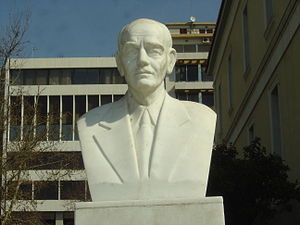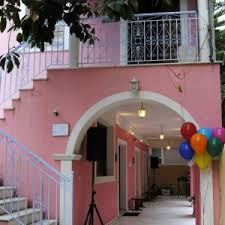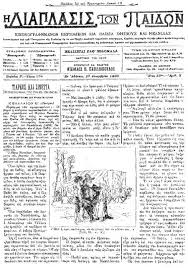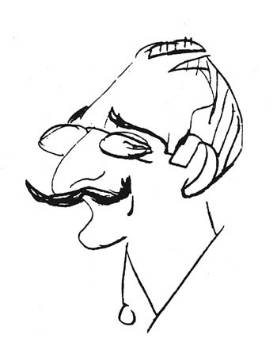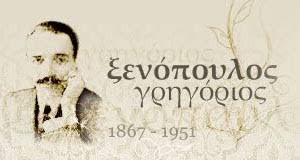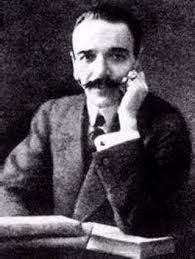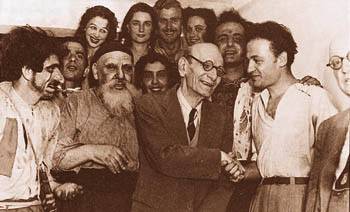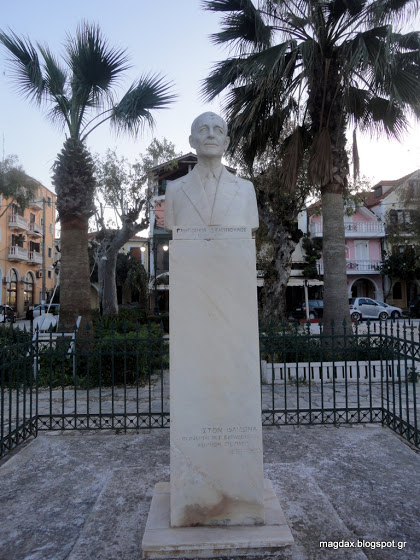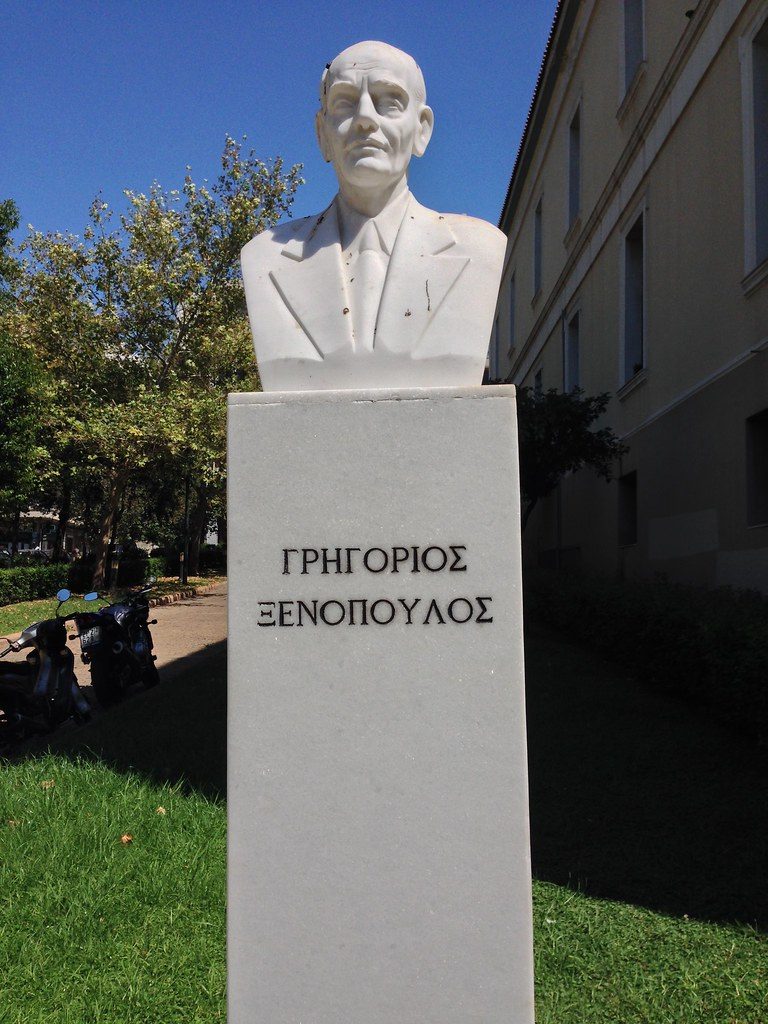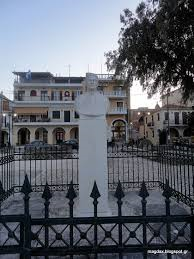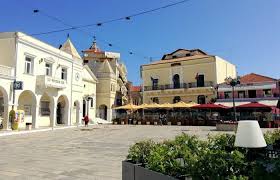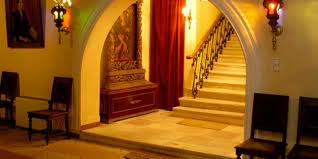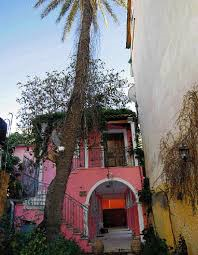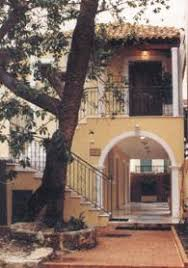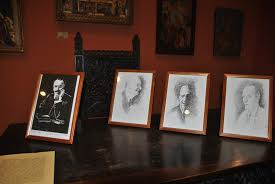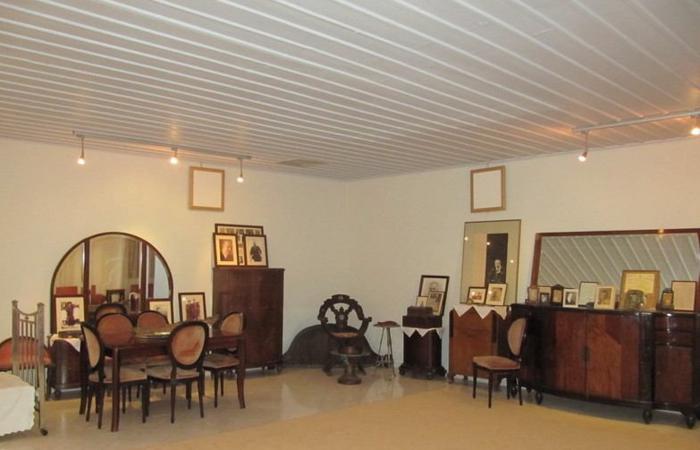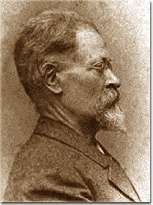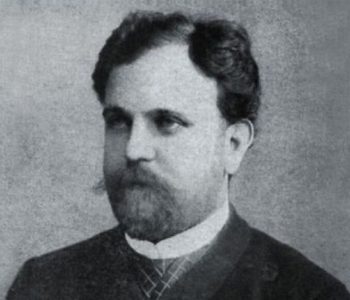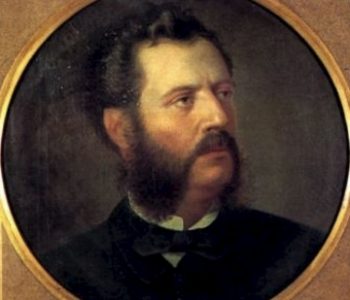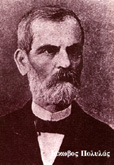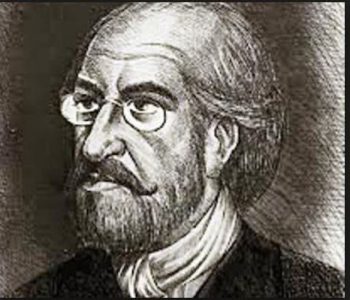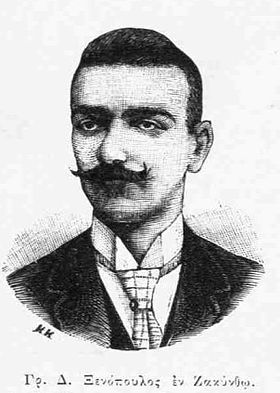
Author: Ksenopoulos, Gregorios Ksenopoulos
Date of Birth: December 9, 1867, Constantinople
Gender: Male
Biography: One of the most prolific writers of this generation is Gregorios Ksenopoulos (1867-1951), from Zakynthos. He was born in Constantinople on December 9, 1867.
His father, Dionysios, came from Zakynthos, with distant roots from the Peloponnese, and his mother Eftalia came from Constantinople with roots from Caesarea. Ksenopoulos had five other brothers and sisters: Maria-Anastasia who died when she was a baby, Olga, Stephanos, Catherine (died in 1934) and Harikleia. Gregorios Ksenopoulos lived his childhood and teenage years in Zakynthos until 1883 when he was enrolled at the University of Athens to study Physics and Mathematics at the suggestion of his friend Nicholas Motsenigos. His studies never ended: from the very first year he had begun to engage in literature, which was his only source of income. From 1892 he settled permanently in Athens and in 1894 married Efrosini Diogenidis. The couple divorced one and a half years after they had already acquired a daughter and the writer was married again in 1901 by Christina Kanellopoulou, with whom she acquired two other daughters. He collaborated with numerous newspapers and magazines in which he published studies, articles, short stories and novels. In 1894 he took over the direction of the Illustrated Estia, in 1896 he became editor-in-chief of the The Education of the Children magazine, of which he was a subscriber during his childhood. From 1901 to 1912 he published in the Panathinaia literary works and studies and from 1912 he began to collaborate with the newspaper Ethnos by writing novels in succession. In 1927 he founded the journal New Estia, whose director was until 1934. In 1939 he became a member of the First Committee of State Literary Prizes. During the Greco-Italian War of 1940, Gregorios Ksenopoulos, along with other Greek scholars, signed the Appeal of the Hellenic Devotees to the Intellectuals of the World, by which, on the one hand, the malicious Italian attack was being chastised, and on the other hand he did not excite world public opinion to a revolution of consciousness for a common new spiritual Marathon. He died in Athens on January 14, 1951, and public spending was spent.
Selected literature
Literary action
Gregorios Ksenopoulos was formed in a cultural and ideological environment combining the culture of his mother and his father with the Western and Zakynthian tradition, and Athenian education. “I am Zachythinos, and Moraite, and Oriental, and Athenian. I am a Panellinas,” he writes in his “Short Autobiography”. He collaborated with numerous newspapers and magazines in which he published studies, articles, short stories and novels. His novels are influenced by realismus and naturalismus; he also recognized as teachers Balzac and Zola, and even Dickens and Daudet. The environment of Ksenopoulos’ novels is Athens and Zakynthos as the writer wants to describe the Greek society of his time in the capital or in the province. With his novels, the transition from the ethografy to the urban and social novel is realized in the early 20th century. Distinguished scholars and critics of his work so far recognize him as one of the editors and founders of the urban novel in Greece. Next to the novel, his theatrical plays are also important. Influenced by Ibsen, he gave his first dramas around 1900. His constant practice is the transfer of his novels or short stories to the stage and vice versa, while he is the first writer who writes most of his roles for existing great protagonists. Gregorios Ksenopoulos is a writer who has described the society from the time of its urbanization to the Athenian belle époque, a historian of ethics, who with his great narrative power managed to create an important spiritual work of lasting value.
Chronology of Gregorios Ksenopoulos
|
1867 | Gregory Ksenopoulos was born in Constantinople, his father was Dionysios Ksenopoulos, and his mother Ethalia Thomadou. |
|
1868 | Installation of the Ksenopoulou family in Zakynthos Island. |
|
1879 | Publication of the magazine “The Education of the children”, in which Ksenopoulos became immediately a subscriber. |
|
1880 | The first publication of Gregorios Ksenopoulos, (a rhyme enigma) in “The Education of the children”. |
|
1883 |
Completion of his studies at Gymnasium. Coming of the author in Athens with the purpose of studying Physics and Mathematics. First novel, “Wonders of the Devil”. |
|
1887/ 1888 |
Abandonment of studies and commitment to literature. |
|
1889/1890 |
Partnership with Estia magazine. |
|
1894 | He took over the Illustrated Estia magazine. Ksenopoulos’ first marriage was performed with Efrosini Diogenitis. |
|
1895 |
Presentation of the comedy “The Psychopateras”. Birth of his daughter Leonie. |
|
1896 |
He takes over as Editor-in-Chief in “The Education of the Children”. |
|
1901 |
From 1901 to 1912, he published in the Panathinaia magazine literary works and studies. Performing a second marriage with Christina G. Kanellopoulou. |
|
1902 |
Birth of his daughter Catherine. |
|
1904 |
Birth of his daughter Ephalia. Writing of “The Secret of the countess Valerena”. |
|
1909 |
Writing of “Stella Violanti”. |
|
1910 |
Writing of “The Temptation”. |
|
1911 |
The last trip to Zakynthos. |
|
1912 |
He started his collaboration with the newspaper “Ethnos”. |
|
1913-1918 |
Writing of “The Psychosavvato” (1913), “Fiori di Levante” (1914), “The Red Rock” (1915), “Kavaleria popolana” (1918). |
|
1919 | The Silver Cross of the Savior is awarded to Ksenopoulos. |
|
1922 | The National Excellence of Letters and Arts is awarded to Ksenopoulos. |
|
1923-1925 |
Writing of “My sister” (1923), “The three shaped woman” (1924), “Anadyomeni” (1925). |
|
1927 |
He establishes and publishes the magazine “New Estia”. He remains the director of the magazine until 1934. |
|
1928 |
Death of the writer’s mother in Zakynthos. |
|
1936 |
He is elected as a academic teacher. |
|
1938/1939 |
Publication of his “Autobiography” in the newspaper “Athenian News”. |
|
1939 |
He became a member of the first State Literary Prize Committee. |
|
1945 |
Destruction of the writer’s home at 42, Evripidou Street, in Athens. He writes in “The Education of the Children” his latest “Athenian Letter”. |
|
1948 |
Interception of version of “The Education of the Children”. |
|
1951 | Death and burial of Gregorios Ksenopoulos in Athens. |
|
1956 |
Re-publishing of “The Education of the Children” by Eva Kyriakou and, a year later, by Costas Paraschos. |
